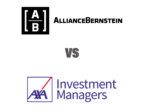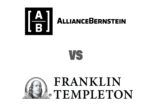“Selective high [interest rate] carry emerging market treasury bills and longer-dated government bonds, that are supported by improving macroeconomic fundamentals, offer attractive alternatives to conventional high yield bonds,” James Blair told FSA in an interview.
The firm’s $775m Global High Income Opportunities Fund has a 24% allocation to the sector, and includes “overweight positions in Egypt and Nigeria, as well as holdings in Argentina, Dominican Republic, India, Indonesia and Turkey domestic debt”, he said.
It is underweight central Europe, “where no improvement in macro-conditions are imminent”, and cut back its allocations to Malaysia and Thailand as risks increased in Asia at the end of last year.
“Sometimes we take a positive view about the direction of emerging market currencies, and on other occasions we might hedge our exposure, which typically depends on how expensive the FX forwards market is. Assessing the risk of currency depreciation against the US dollar is a factor in our analysis of all markets, along with our expectations about key metrics such as economic growth, inflation, interest rates, and internal and external balances,” said Blair.
The fund, which was set up two decades ago, is co-managed by Robert Neithart, an emerging markets specialist and David Daigle, who runs the US high yield portfolio.
It contains 175 individual holdings across the high yield and emerging market spectrum, with an average credit rating of single-B and a duration of four years. Although the fund doesn’t have an explicit yield target, its income distribution yield is currently 7.2% and has averaged 7.7% in the past decade, according to Blair.
“Our priority is to earn income, and in this uncertain environment, diversification makes sense,” he added.
Asset type breakdown
| Emerging Markets |
51.4% |
| EM govt. local currency |
23.5% |
| EM govt. hard currency |
23.2% |
| EM corporates local currency |
1.2% |
| EM corporates hard currency |
3.5% |
| US HY |
34.7% |
| Non-US |
6.6% |
| Other assets |
0.2% |
| Cash |
7.1% |
Source: Capital Group (30 April 2019)
The fund’s US high yield allocations are predominantly to the energy, healthcare and pharmaceutical sectors, but “emerging market bonds are generally more appealing than developed market high yield securities, whose valuations have become more expensive this year”, he said.
Its bet on emerging market local currency debt – and, implicitly a weaker dollar – seems to have paid off, helping to generate a 23.45% cumulative return for the fund over the past three years, according to FE Analytics data.
The performance is the best among 85 products in the global fixed income category authorised for sale to Hong Kong and/or Singapore retail investors, although its 4.6% annualised volatility is higher then the sector average of 2.99%.
Blair emphasised the positive contribution to performance of its Egypt exposure, “where stabilising government measures have supported the currency and investors can still earn annualised yields in the teens. Moreover, the macro outlook is [even] improving in Turkey, where we expect inflation to come down”.
High risk portfolio?
The fund also has a 26% weighting to US-dollar denominated emerging market bonds, including so-called frontier countries in Africa such as Côte d’Ivoire, Gabon and Ghana, in Latin America (Honduras and Paraguay) and in Asia (Pakistan and Sri Lanka).
Despite the appearance of a high-risk portfolio, Blair insisted that the fund has recently turned more defensive. It is now overweight cash, with a 7.1% allocation, although the decision was more motivated by higher valuations – for instance, yield spread tightening relative to US Treasuries in the high yield sector – than by fears about the global or regional economies.
Nevertheless, “a stronger US dollar would cause stress to some emerging markets, while a US recession – which we think is unlikely – would have a negative impact on both emerging market and high yield bonds, because both asset classes are sensitive to economic growth,” he said.
However, Blair might be underestimating the impact of an escalating US-China trade war to investor sentiment.
According to a recent report by the Institute of International Finance, overseas investors have withdrawn cash from emerging market assets (bond and equities) at a rate of more than $5bn a week since US President Trump announced increased tariffs on Chinese imports on 6 May.
Hard currency emerging market sovereign bond prices are still close to year-to-date highs, as measured by benchmark JP Morgan indices, but local currency bonds have dropped 3% from their peaks.
Capital Group Global High Income Opportunities Fund vs benchmarks and sector average

















